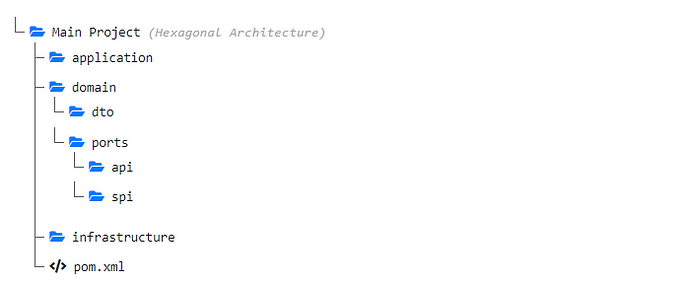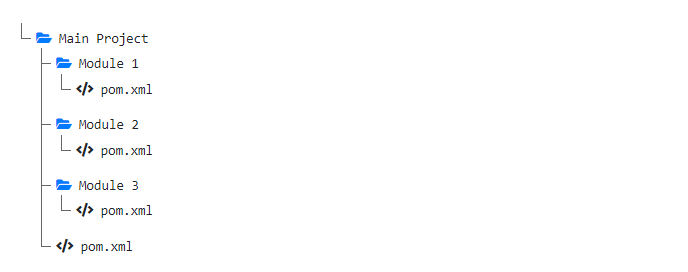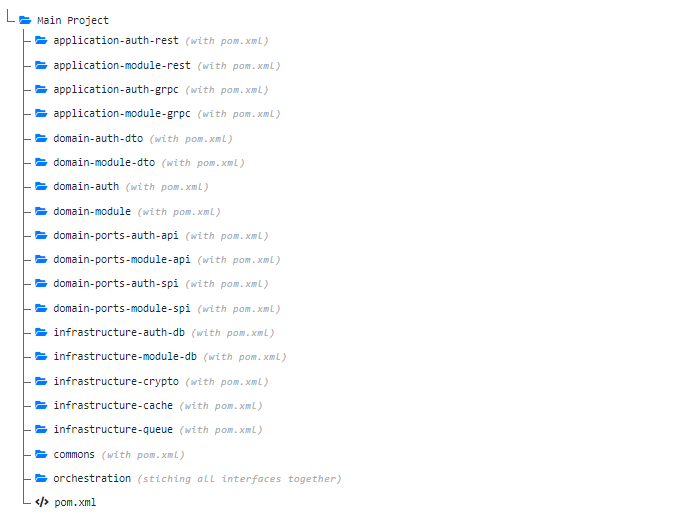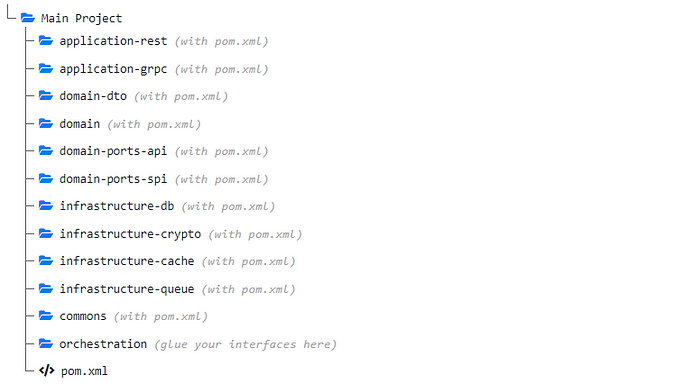Is there a universally right structure? A look at hexagonal architecture
How developers can innocently break it and solutions to fix it.
How developers can break it and solutions to fix it. Hexagonal architecture / CLEAN / Domain Driven Design knowledge is essential to understand the article. (They all are tailored in some way, but mean the same)
For a detailed explanation of a hexagonal architecture, you can refer link
Below is a common example of how developers usually structure projects according to hexagonal architecture and source material from the internet.

Hexagonal structure
The Problem:
Cross-reference of classes!!! Because they would pop up on Control + Space / Autosuggest in your IDE. :) for a single maven project structure.
How you can break it (innocently) 😇
Imagine your DTO bean being used as an object to send JSON response or even worst your entity bean is being used to create JSON response.
Your controller is directly calling the infrastructure (a database repository).
And if you do not have a review mechanism in place, chances are that now you break the hexagonal architecture and are not aware until dooms day (As an example, where you were to break them into microservices) 😦
Solution: Multi-module Maven to the rescue!!!
Heard about the multi-module maven project? It looks something like this;

Multi-module maven project structure
Each module has its own dependencies and/or common dependencies and/or module dependencies would be shared across the main pom.xml of the application.

Complex systems - hexagonal architecture
And an example of simpler applications

Relatively simpler systems — hexagonal architecture
How this can restrict developers from making mistakes;
application* will have dependencies from domain-dto, domain-ports-api and commons
the domain will have dependencies from domain-dto, domain-ports-api , domain-ports-spi and commons
infrastructure will have dependencies from commons and domain-ports-spi
orchestration will have dependencies from all modules
You can refer to an example structure used in my existing opensource project at https://github.com/godwinpinto/authable (directory: authable-core-api)
Conclusion:
If your project is small (guestimates of 20–50 java files), then have proper reviews in place to verify that no one breaks the structure(not multi-maven) else go with a multi-module maven project to segregate the layers.
By layers, it means in future;
Different teams to manage different modules/components
Large code base in future
Easily portable based on your client's infrastructure (meaning different db vendors, caching mechanisms, etc.)
For quicker porting time to microservices from the monolith.
Thanks for reading.